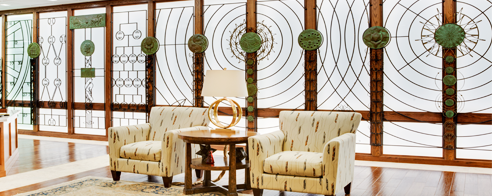Music of the Spheres
Music and astronomy were taught as complementary sciences, and both were understood as subdisciplines of mathematics in Galileo’s world. The harmonious motions of the planets created the music of the spheres.
History of Science
5th Floor Special Collections

This exhibit is located on the 5th Floor Special Collections, accessed through the elevators in the west main lobby of Bizzell Memorial Library. Visit History of Science for visitor information.
Exhibit Highlights
Essential items for a core understanding
Exhibit At A Glance
| 1 |
Vincenzo Galilei, Dialogue on Ancient and Modern Music (Dialogo della Musica Antica et della Moderna). Florence, 1581
|
 |
| 2 |
Johann Kepler, Harmony of the Universe (Harmonices mundi). Linz, 1619
|
 |
| 1 |
Martianus Capella, The Marriage of Philology and Mercury (De nuptijs philologie et Mercurij). Verona, 1499
|
 |
| 2 |
Robert Fludd, On the Two Worlds, namely the Major and the Minor (Utriusque cosmi maioris scilicet et minoris). Oppenheim, 1617-1621
|
 |
| 3 |
Athanasius Kircher, Universal Music-Making (Musurgia universalis). Rome, 1650
|
| 1 |
Hartmann Schedel, The Nuremberg Chronicle (Liber Chronicorum). Nuremberg, 1493
|
 |
| 2 |
Peter Apian, Cosmography, 1545 (Cosmographia). Antwerp, 1545
|
 |
| 3 |
Macrobius, On the Dream of Scipio (In somnium Scipionis). Cologne, 1521
|
| 1 |
Dante, The Divine Comedy (La Divina Commedia e le Opere Minori). Venice, 1757
|
|
| 2 |
Chaucer, Workes, Chaucer. London, 1598
|
 |
| 3 |
Shakespeare, Second Folio (Comedies, Histories, and Tragedies). London, 1632
|
 |
| 0 |
Ron Mitchell, Kepler's Universe
|
|
| 1 |
Claudius Ptolemy, Almagest, ed. Regiomontanus (“Epitome” of Ptolemy's “Almagest” by Regiomontanus). Nuremberg, 1496
|
 |
| 2 |
Claudius Ptolemy, Almagest, ed. Reinhold (Mathematicae constructionis by Erasmus Reinhold). Wittenberg, 1549
|
|
| 3 |
Claudius Ptolemy, Four Books (Quadripartitum). Prague, 1610
|
|
| 4 |
Claudius Ptolemy, Harmonics (Armonikon). Oxford, 1682
|
 |
| 5 |
Nicolaus Copernicus, On the Revolutions of the Heavenly Spheres, 1543 (De revolutionibus orbium coelestium). Nuremberg, 1543
|
 |
| 6 |
Johann Franciscus Offusius, On the Divine Faculty of Stars (De divina astrorum facultate). Paris, 1570
|
 |
| 7 |
Johann Kepler, Sacred Mystery of the Structure of the Cosmos (Mysterium cosmographicum). Tübingen, 1596
|
 |
Explore the Topic
Supplemental resources for a rich educational experience
 |
Pretelescopic Astronomy Learn more about the pretelescopic astronomy. |
 |
Sundials Learn more about sundials. |
 |
Nocturnal Learn more about the nocturnal, which records months and days of the year. |
 |
Galileo's World Exhibit Guide iBook companion to the Galileo's World exhibition |










